Update #2: Friday, May 18, 07:45; Dubai. This is the weekend edition of TheMarioBlog and will be updated as needed.
The next new blog post is scheduled for Monday, May 21.
TAKEAWAY: As the Gulf News of the UAE prepares for its change to the Berliner format, interest increases about the benefits of going Berliner. We review those, and update you on the Gulf News Tablet, 14 months after it launched.

The view of the Dubai Marina skyline at night; photo by Frank Deville
Behold the Berliner format.
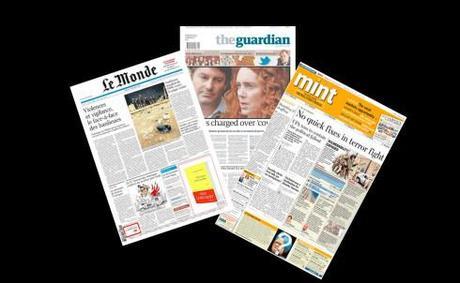
The Berliner format has been adopted by some of the world’s best known newspapers, including Le Monde (France), The Guardian (UK) and Mint (India). The size of the Berliner allows these newspapers to differentiate themselves from the smaller tabloids, allow for sectionalizing that is easy to pull out, and create a distinctive look that research shows readers appreciate
The announcement in this blog earlier this week about the Gulf News converting to the Berliner format on June 1 has prompted dozens of emails and telephone calls from around the world, with one question: why the Berliner format?
Why not, is my standard answer.
The benefits of the Berliner format are many (not to mention that it makes for an attractive size, a great canvas on which to place text and images).
What are some of those benefits?
It gives us the benefits of the long adored broadsheet, with the visual energy and vibrancy of the tabloid.
It allows for sectioning of the department, with sections that can be pulled out.
It allows a text driven newspaper to carry stories to be read on page one, but with visual navigators.
It allows for a double page package to be read as a unit, since readers hold the two pages open without folding them, as is usually the case with broadsheets.
It presents an ideal canvas for the display of advertising.
The Berliner format at a glance
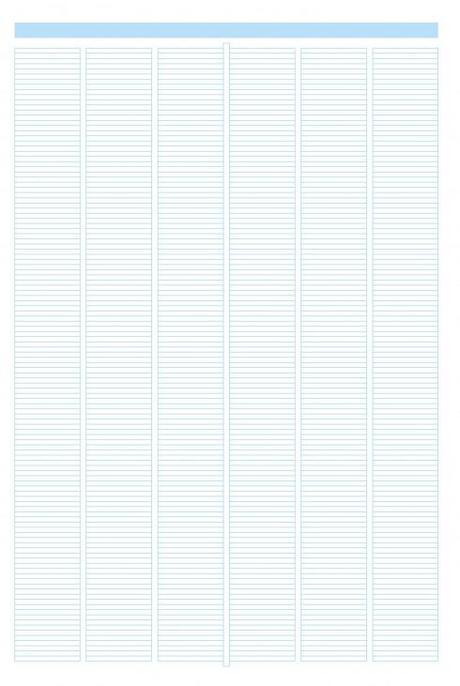
Here is sample Berliner grid
Page size: The new Berliner format for the Gulf News is 295 mm wide with 10 mm on each side for a total of 315mm; 440 mm long with 10 mm margin top, 20mm margin bottom, total 470
Columns: Six column grid, each column 4.5mm, gutter of 5mm
Internal space: As the grid here shows, the Berliner page has six columns
Advertising modules: smallest is 45mm by 10.10 points, for a total of 8 on the page vertically and 6 horizontally.
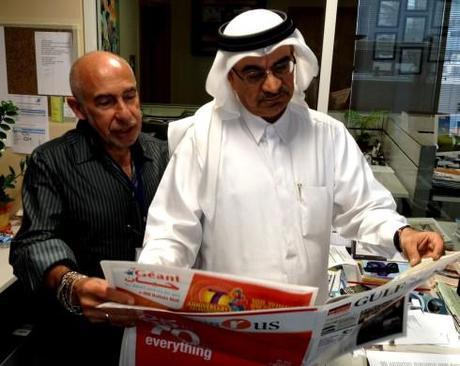
Gulf News Editor in Chief Abdul Hamid Ahmad and I discuss content distribution in the existing broadsheet edition and how those contents will transfer to the Berliner format effective June 1.
Newspaper sizes at a glance
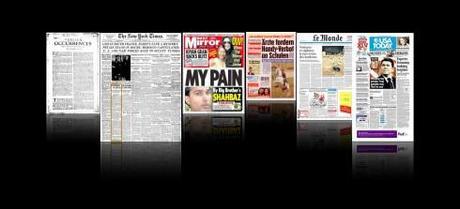
From left: at the beginning, pamphlet-like formats, then giant broadsheet, tabloid, A4, Berliner and the “narrow web” broadsheet
If we take a look at the history of newspapers, this is what we see:
Original “pamphlet” format:
The first “newspapers,“ such as the London Gazette (1666)
or, in the US, Publick Occurrences (1690), appeared in the format
of small pamphlets.
Broadsheets: At first, huge 10-column broadsheets developed in 1712 when the British authorities placed a tax on newspapers based on the number of their pages. The tax regulations did not specify size of page. The larger pages became a status symbol, associated with the serious newspaper, which remain to this day. Among the most popular today, The New York Times and the Times of India, among others.
Tabloids: Born around 1830s, as part of a popular, more down market press.
The first of the big tabloids, The London Daily Mirror (1903) led to the first mass circulation tabloid in the US, The New York Daily News. The word tabloid has carried a connotation of a less serious and/or authoritative newspaper. However, since the 1980s, some of the world’s most distinguished dailies have started publishing in the format, among them Times of London, El Pais (Spain)
A4: Seen mostly in the German speaking world, the A4 format is easy to carry, popular with readers in Germany, Austria and parts of Switzerland. Among the most popular, Kronen Zeitung and Kleine Zeitung (Austria), Hamburger MorgenPost (Germany) and 24 Sata (Croatia)
Berliner format: Since the late 1990s the Berliner format has captivated the imagination of newspaper publishers who felt the broadsheet was no longer the most viable format, but who did not wish to take their products to a tabloid size.
Instead, the Berliner format allowed them for publishing of separate sections that readers can pull out. Among the most notable Berliner format newspapers: Le Monde (France), The Guardian (UK), Mint (India). And starting today, the first in the Gulf region: Gulf News.
Narrow web broadsheets: While US newspapers continue to be mostly published as broadsheets, publishers are aware of the preference for smaller formats, prompting several, including such national dailies as The Wall Street Journal and USA Today to move to the 40 to 46” so called “narrow web” format, a long broadsheet with the width of the Berliner but about 4 inches longer.
The Gulf News Tablet ( a follow up)
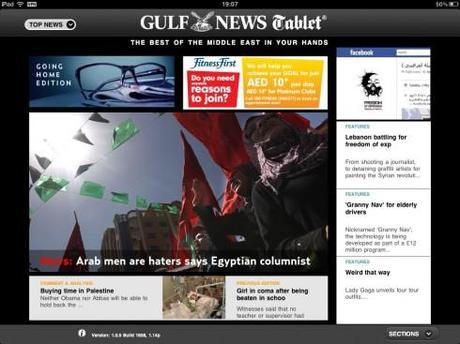
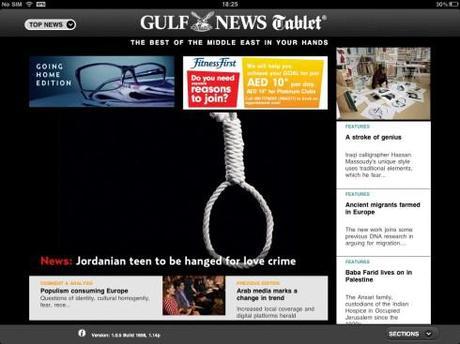
As the Gulf News moves into its new era with the Berliner format, we also pay attention to the Gulf News Tablet, which was introduced 14 months ago. Tablet editor Anupa Kurian updates us on what is happening to this curated edition which continues to publish two editions a day.
“We now know more about our audience, and we have adapted a lot of what we do in curating content based on this knowledge,” Anupa told me. “We have been quite successful with over 77000 downloads——about 14000 daily, with a vast local audience, but also a strong segment in North America.”
When we first conceptualized the Gulf News Tablet as a team in 2011, the idea was to curate material for both the morning edition, Morning Coffee, and an evening edition, Going Home. At first, the Tablet was rather feature-oriented for its content, but Anupa tells me that that has changed dramatically since the start of the tablet edition.
“We now know that the majority of our readers are not coming to the Gulf News Tablet as its primary source of Middle East news,” says Anupa. “They have other sources for that, which means that our role is to concentrate on other type of stories, such as people ,politics and issues.”
In recent weeks, the Gulf News Tablet has explored stories that, according to Anupa, tend to humanize the Middle East.
“The tablet’s focus is the Middle East, an investigative look at it and to let the world know, there is more to the region, more to its people. It’s about providing content that readers will not find elsewhere. This to me is the only way in which you can build the platform,” she says.
In Anupa’s words:
“Some of the unique stories the tablet has covered are such as the Kuwaiti painter Shurooq Amin whose exhibition was closed by the authorities within hours of opening – it raised the debate over freedom of expression - that is quite strong in Kuwait. We contacted the painter, after getting a tip-off from a report. Filed a story with fresh pictures sourced from her, for the evening edition – all within four hours. That story then migrated into print. This was on April 4.
“We’ve also done special packages with multiple stories, such as tackling the issue of orphans in the Middle East – they’re the forgotten people. Conflict, civil war, political instability, unemployment and poverty mean there many who are anchorless. It is a huge problem, but very little is done because there aren’t enough resources available. We brought that to the fore.
“We also looked at issues such as the fleeing of Christians from the Middle East, reported on a Jordanian teenager who was going to be hung for a ‘love crime’ and the related subject of death penalty, the ‘apparent’ hate of women in the Arab world, honor killings being legitimised in Iraq, a Syrian actress warring with Hezbollah on Facebook and the disappearing Jewish silversmiths of Yemen – they’re leaving, endangering the nation’s unique traditional industry.
“And it would not have been possible without the fabulous tablet team of editors-researchers-writers-all rolled into one - Sara Shurafa, Rabab Khan and Noor Al Khatib, along with the help of our young trainee Jumana Khamis. The rest of the section that focuses on reader interactivity also pitches in, including Sanya Nayeem and Mohammad Jihad.“
Cross migration of stories across platforms
Anupa is proud of the fact that stories created by her team are now cross migrating to the print and online editions of the Gulf News.
“Our multi cultural, multi lingual team is combing social networking sites, such as Facebook, and finding treasures of stories that, indeed, can be expanded, localized and given a new life via the Tablet edition,” she says. “We like that, and I think our readers benefit, through all platforms.”
As such, and as the Tablet edition at the Gulf News comes into its own, Anupa reports that the morning edition takes about 80% of its content directly from print, but the evening edition is 75% uniquely curated content for the tablet.
Read stories from the Gulf News Tablet edition here:
Arab Orphan Day package -
http://gulfnews.com/news/arab-orphans-day-the-forgotten-children-1.1004917
http://gulfnews.com/news/world/orphans-of-the-world-1.1004916
Christmas Arab World -
http://gulfnews.com/news/region/palestinian-territories/the-disappearing-christians-of-the-occupied-holy-land-1.956437
http://gulfnews.com/news/region/general/middle-east-christians-worried-about-arab-spring-1.956435
Other GN Media magazines gone to the iPad

More GN Magazines have now gone into tablet editions, representing a variety of subjects from general interest women’s mags, to ars, homes and men’s fashion and fitness.
The iPad Design Lab: Storytelling in the Age of the Tablet
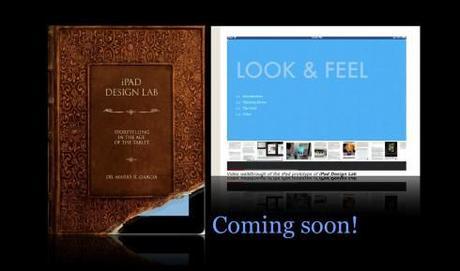
Video walkthrough of the iPad prototype of iPad Design Lab
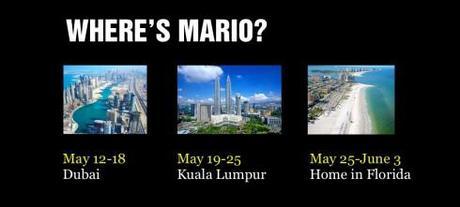
TheMarioBlog post #1021

